Japanese Architecture and Design: Five Ways to Breathe Tranquility into Your Home
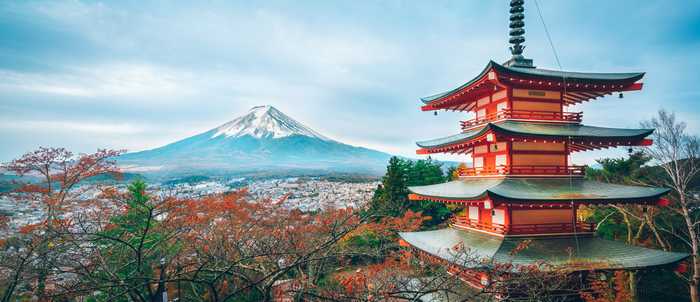
From the thatched roofs in Ogimachi, to the hidden roofs of Buddhist temples and Shinto shrines, all the way to the high rises synonymous with Tokyo, Japan has a diverse and unique approach to architecture. And, while the more traditional homes may seem a far cry from the modern apato (apartments), they all boast open-plan, minimalist designs, flooded with natural light.
The Japanese home is a sanctuary to peace and calm. From the moment one enters the genkan (porch) the use of natural materials, incorporation of nature into the décor, and the art of kanso (‘simplicity’) contribute to the ultimate Zen ambience.

1. Genkan & Agarikamachi
Much like the British “porch”, the genkan is a space to welcome visitors and invite them into your home. Traditionally, the floor (tataki) is made from natural stone. Once shoes are removed, guests enter the house via a step known as the agarikamachi. Slippers are usually left on this step for people to wear, to keep tatami mats clean and the wearers comfortable.
Considered the most prestigious part of the home, the genkan sets the expectation for the rest of the house; often this space will be decorated with flowers or ornaments.
Try it out: Rather than quickly ushering guests in from the rain and risking mud being tracked through your clean home, a larger porch space would allow your visitors to prepare to enter your abode. Lacking space? Give your entrance hall a lick of paint and brighten it up with a few choice ornaments or fresh flowers to set the tone of your home.
2. Natural Wood
Conventionally, Japanese homes feature natural wood, particularly cryptomeria, cypress, and pine. These timbers are favoured for their resistance to mould and insects but are also valued for the beauty in their grains. As a result, the wood is usually tinted not painted.
We all have a preferred space in our house to host important guests; this is known as the takanoma in Japan. The most expensive piece of wood in the house’s construction is reserved for this area and is usually a long length of cypress. Here, you might also find the homeowners’ favourite and most valuable pieces of art.
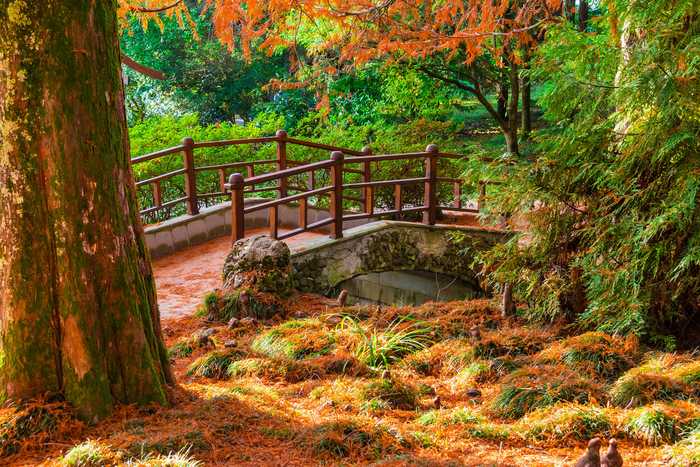
Try it out: Natural wood offers versatility and beauty, both as a construction material and for decorative purposes. You could install a natural wood floor or use a wooden table as a centrepiece for your lounge or diner. Remember: while darker woods offer an air of luxury, lighter woods are most popular for making small spaces feel bigger and airier.
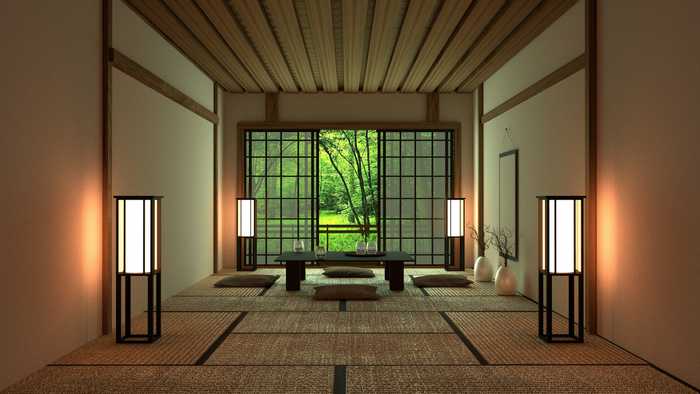
3. Sliding Doors & Fusuma
Everybody dreams of a home that is filled with natural light. In Japan, this is achieved with a combination of open-plan designs, sliding doors, and moveable wall screens called fusuma. Not only do the sliding doors regulate light, but they allow occupants to better control temperature.
The rails the sliding doors sit on are called shikii (bottom) and kamoi (top). Often, between the kamoi and the ceiling, is a decorative panel called a ranma. As well as being ornate, the ranma allows for better ventilation.
Try it out: For those living in apartments, the use of screens could be a viable means to make best use of the light and space available.
4. Oshi-ire and Kanso
While sprawling family homes are popular for the luxury and space they afford, Tokyo – the capital of Japan – is famed for its boxy high-rise apartments. Here, creativity comes into play to maximise room and, as a result, modular designs are growing increasingly popular.
In addition, oshi-ire (hidden storage spaces) are used, alongside kanso – the elimination of clutter and the non-essential – to keep small homes tidy. Kanso promotes a sense of restraint and a focus on simplicity, which satisfies the human longing for quiet. It is achieved by including the ancient concepts of wabi (transient and stark beauty) and sabi (the beauty of nature and aging); the old and the new.
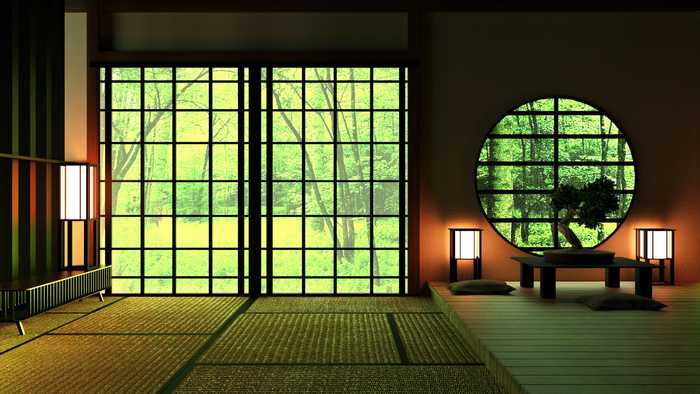
Try it out: Urban dwellers might take some time to ‘Marie Kondo’ their living space before installing more modular designs, which include oshi-ire.
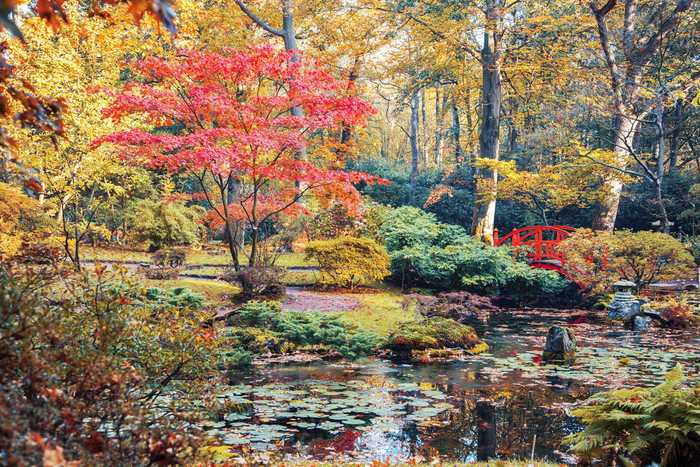
5. Engawa and Zen Gardens
The engawa is most likened to a terrace but is actually a corridor connecting the living room to the garden. In the summer months, the sliding doors are opened, which gives a sense of bringing the outdoors in. It is customary to enjoy a cup of tea or play board games here, while enjoying the garden.
Speaking of which, garden design has changed immensely over the course of Japanese history, though modern gardens take ideas from a variety of eras. Common features include water, rocks, sand, garden bridges, stone lanterns, water basins, and fish.
Try it out: If your property has adequate outdoor space, a pond filled with koi carp, water features, and a garden bridge would provide a sense of peace. In Japan, the sound of moving water is often used to drown out other distracting sounds while meditating. However, for those living in apartments, an indoor Zen garden – consisting of sand and rocks – might be more appropriate.
So, there you have it, five ways to harness nature, a peaceful ambience, and Japanese architectural traditions to breathe tranquility into your home.
Posted by Wouter De Jager on July 23rd 2021
